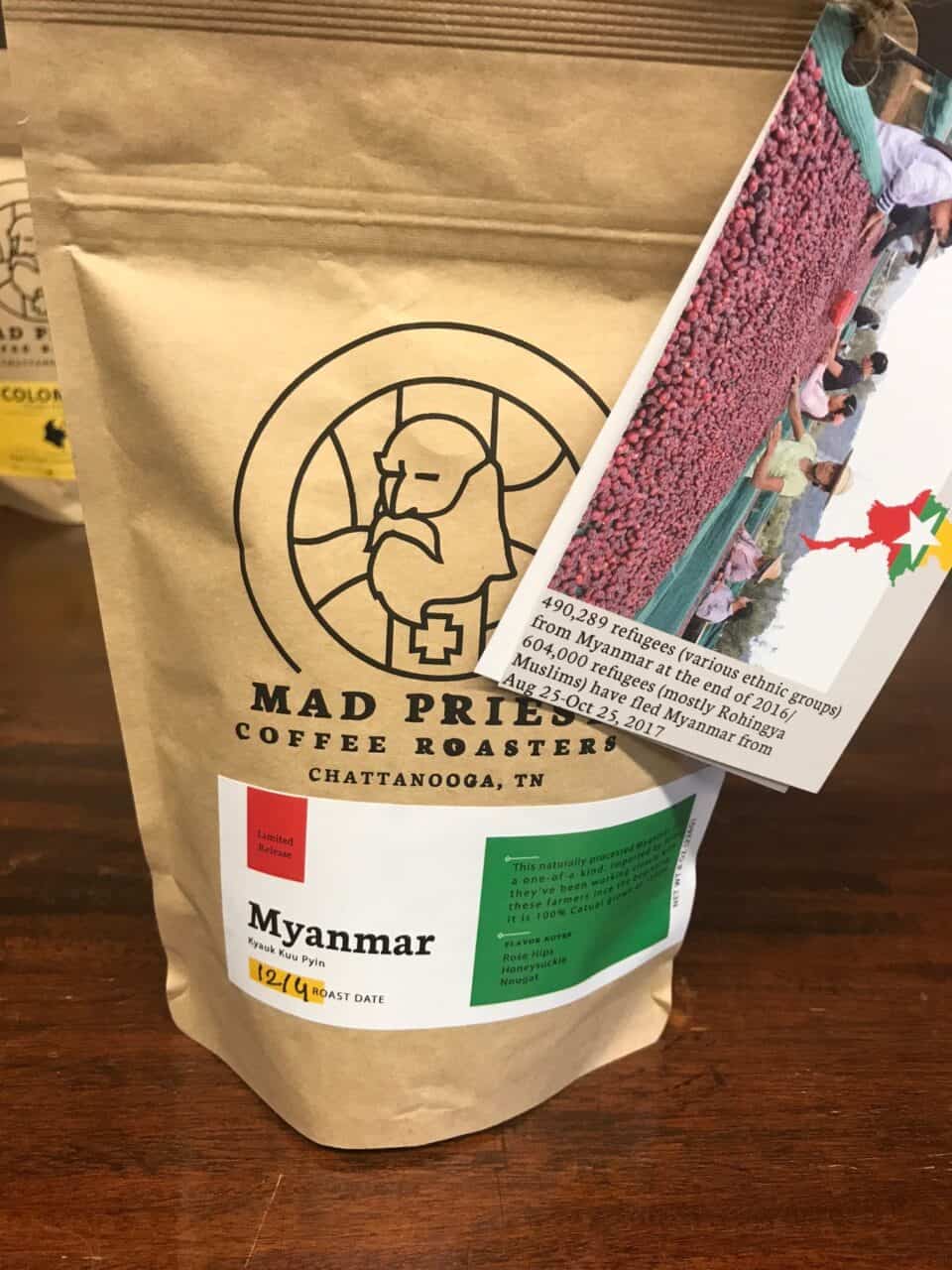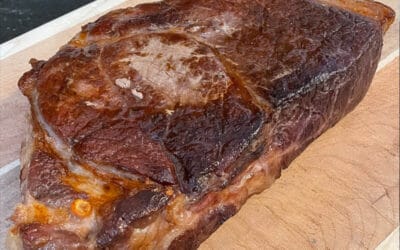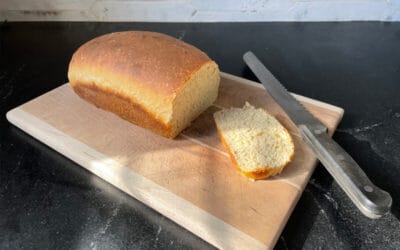This week’s recipe comes from Mad Priest Coffee’s Cherita Rice. It’s for Mohinga, a fish stew from Myanmar. Mad Priest regularly puts the spotlight on a coffee and the country it’s from with information on the country and its people, plus a traditional recipe that you can make, often with market ingredients.
From Mad Priest about Myanmar:
British rule in Myanmar (formerly Burma) brought several enduring changes that completely transformed the society and unfortunately also highlighted differences among the country’s 135 ethnic groups. Since independence in 1948, one of the world’s longest running civil wars has displaced large populations in ethnic-minority regions, created massive flows of refugees to other countries, and killed untold numbers of civilians. The country was under military rule of various guises from 1962 to 2010 and now is trying to work towards a democracy under the famed leader Daw Aung San Suu Kyi. But the military still has a lot of power and is trying to unify the country by unleashing its fury on the Rohingya people (one of the only Muslim ethnic groups in Myanmar). The government and Buddhist religious leaders have persecuted the Rohingya for decades, but their current plight is nothing short of textbook ethnic cleansing and genocide, causing tens of thousands to flee in a two month period.
And coffee? Though the British first introduced coffee to central Myanmar in 1885, commercial production didn’t take off at first, and after independence, the industry went into a kind of forced hibernation for over 50 years under the tyranny of military rule. But given the perfect conditions for growing coffee in the highlands, several organizations have begun to develop Myanmar’s coffee production as the economy has recently opened up again. And some of their initial coffees are taking the specialty coffee world by storm!
About Mohinga:
Burmese cuisine is a beautiful fusion of Southeast Asian, Chinese and Indian flavors. Bursting with contrasting textures, fragrances, and flavors, Mohinga is a Burmese catfish chowder served over rice noodles. Considered their national dish, it’s actually the breakfast of choice wherever you go in Burma, but it’s also sold throughout the day by restaurants, tea houses and street vendors.
From Heather on Mohinga ingredients:
You can use cod from Wild Alaska for the fish in this recipe. If you picked up fresh ginger and turmeric at the market a few weeks ago, great! You can use them in this dish. The conversion I’ve seen online for fresh turmeric replacing dried is 1 tablespoon grated fresh for 1 teaspoon dried – about a 1-inch piece of fresh. Garlic and onions are available at market these days as well. Ask your farmer about cilantro (fresh coriander), green/spring onions, and lemongrass (these are seasonal items).
Mohinga (Burmese Fish Noodle Soup)
From Cherita Rice, Mad Priest Coffee Roasters
Ingredients:
3 tbsp vegetable oil
2 onions, chopped
4 garlic cloves, crushed
1-inch freshly grated ginger root
1 stalk lemongrass, very finely chopped
1 tsp paprika powder
1 tsp turmeric powder
1 tsp black pepper
6 cups vegetable stock
2 tbsp fish sauce (or more to taste)
4 tbsp rice or chickpea flour (mixed with a little cold water)
1lb catfish or any firm fish
1lb fine rice noodles (vermicelli)
Garnishes: 4 hard boiled eggs (quartered), sliced spring onions, fresh coriander leaves, fried crispy onions, lime wedges, chili oil
Instructions:
Heat the oil in a large saucepan, then add the onion, garlic, ginger, lemongrass, paprika, turmeric, and black pepper and cook for a few minutes over medium heat, stirring until fragrant. Add the vegetable broth, fish sauce, and rice flour mixture. Mix well and bring to a boil, stirring thoroughly to prevent any lumps forming. Once the soup has thickened, reduce the heat and simmer for 20 minutes. Cut the fish into chunks then add to the soup. Mix well and continue to cook for a further 10 minutes.
Meanwhile, put the noodles into a heatproof bowl, generously cover with just-boiled water, untangle with a fork and then leave to soak for 15 minutes or until tender. Drain the noodles into a colander and rinse them thoroughly with cold running water. To serve, place a portion of noodles in individual soup bowls, then top with the soup and garnishes of choice!





0 Comments